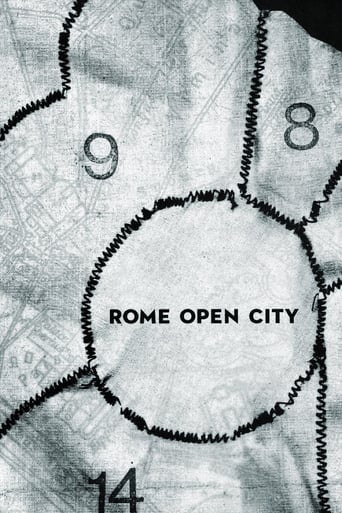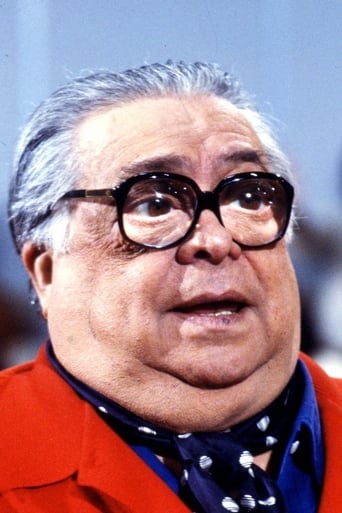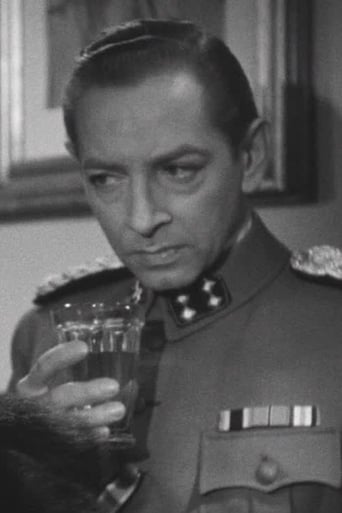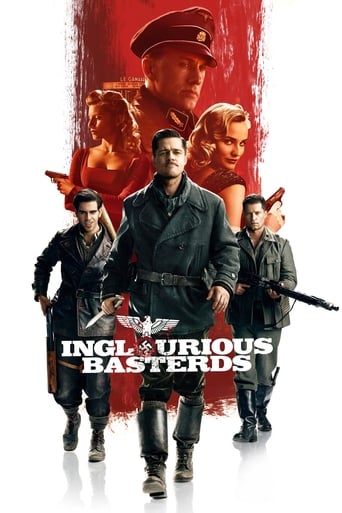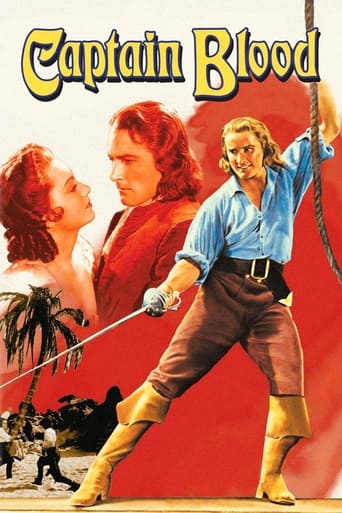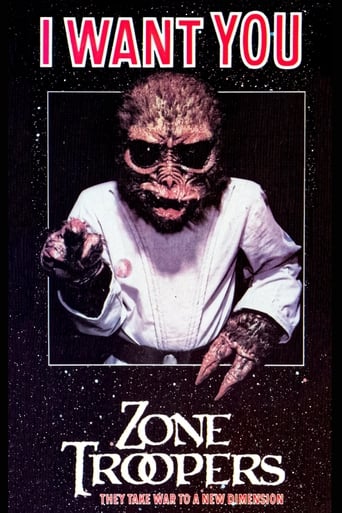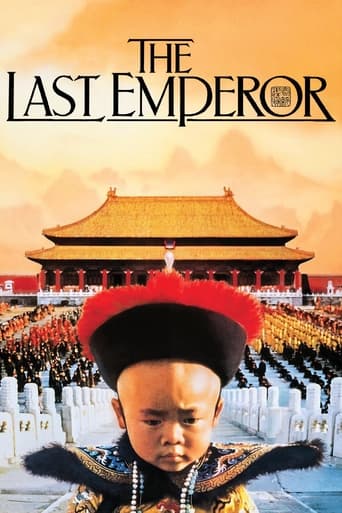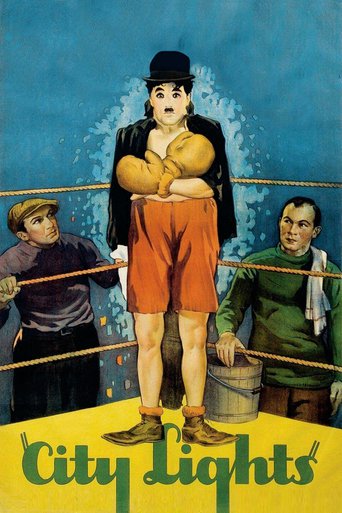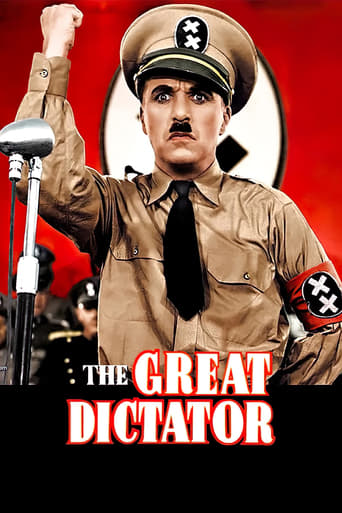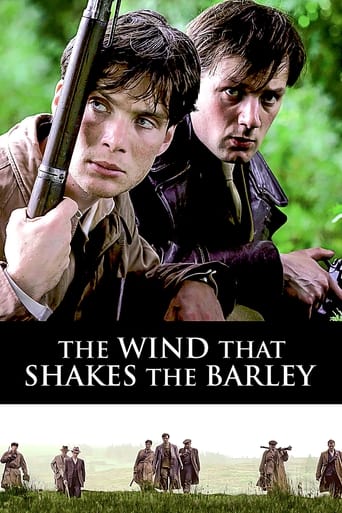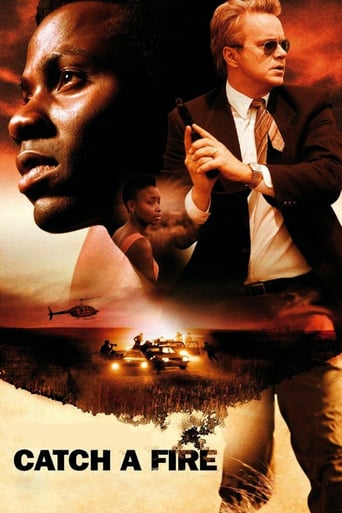Rome, Open City (1945)
During the Nazi occupation of Rome in 1944, the leader of the Resistance is chased by the Nazis as he seeks refuge and a way to escape.
Watch Trailer
Free Trial Channels
Cast


Similar titles
Reviews
Watch something else. There are very few redeeming qualities to this film.
if their story seems completely bonkers, almost like a feverish work of fiction, you ain't heard nothing yet.
Close shines in drama with strong language, adult themes.
This is a small, humorous movie in some ways, but it has a huge heart. What a nice experience.
It depicts its essence within its characters while the theme circles around faith. Much of Rossellini's pictures are somewhat a representation of this. Here the characters must escape or adapt the new federal law. Nazi forces have mobilized into Rome and the generals are tasked to sniff out any resistant leaders. This takes our main characters down several rabbit holes eventually leading into a torture; portraying the harsh brutality of World War 2. The movie undermines each character in better and worst situations. Most of them never prove within their strength. Rather they body themselves to fit in while others go against. It is the resistant characters who are trialled horribly and the general who is stern in approach. With each decision, our protagonists spiral into a lack of control. Ultimately, it leads to violence.There are tender moments however, between the lovers, a family, a couple and a priest where they find solidarity. This is its undertone and depicted gracefully through the acting. Then, after the first act, the movie climes its summit religious like. Death arrives, and the harsh reality turns into a darker bitterer atmosphere. Then, the final moments with the priest and the children direct us to a company of children with strength in their hearts and faith by their side. This is the third act in which it binds the tangent of the movie. With each directional point, it is presented with such a humane behaviour by Rossellini. Improvisational and spontaneous yet controlled by the editing. It's seamless. The acting is similarly yielded with praise, especially from the priest and the mother. We the audience encapsulates the essence and spirit that stands triumphant. Respectfully and rightfully, a great movie of history and of the human heart.
Shot between January and June 1945, Roberto Rossellini's Rome, Open City, chronicles the effect of Nazi occupation on the people of Rome a year earlier. Unlike other films of the time, many scenes were shot on location in a documentary style. The lack of funds and good film stock forced Rossellinni to cut corners so the quality of some of the scenes do not appear to have been lit properly—nonetheless, the sometimes grainy images add to the overall verisimilitude of the narrative.After Italy faithfully followed the fascist dictator Mussolini for twenty years and he was finally deposed two years earlier, Rossellini's main intent was to rehabilitate the Italian people in the eyes of the world. No matter how noxious Mussolini was, his machinations could never equal the sheer terror machine which was Nazi Germany, and the Italians, under the yoke of Nazi oppression, became victims soon after Hitler's troops marched into Rome and began terrorizing the populace.Rossellini's main protagonist is Giorgio Manfedi (Marcello Pagliero), an engineer and Communist resistance leader, who we later learn did 12 years hard time as an anti-Fascist agitator. After escaping the Nazis by fleeing from a rooming house and climbing over rooftops, Giorgio makes his way to the apartment of fellow Resistance fighter, Francesco. Not home yet, he ends up speaking with his next-door neighbor, Pina, Francesco's pregnant fiancée (played by the iconic Anna Magnani, whose performance as Pina made her a star).We're next introduced to Don Pietro, a Catholic priest sympathetic to the Resistance, who is scheduled to officiate at Pina and Francesco's wedding the next day. In Rossellini's world view, Don Pietro and Giorgio are not incompatible despite past conflicts between Communists and a right-leaning Catholic church. The Nazi terror bonds them together and indeed Don Pietro is more than willing to help Giorgio by taking money and information to Resistance leaders outside the city. As a priest, he is permitted to roam about during the curfew.The collaborators are represented by two women: Pina's sister, Laura, and Marina, Giorgio former girlfriend, who both work at the same cabaret, and receive financial support by prostituting themselves to German officers. The fact that Giorgio never suspects that Marina is a collaborator is perhaps one of the most glaring weaknesses of the script.Rossellini did a wonderful job casting a dance hall entertainer, Harry Fiest, to play the SS commander in the City, Major Bergmann. Some have complained that Bergmann appears effeminate and it's been argued that homosexuality was often linked to the perverse evil of the Nazis in films of the time. In reality, Hitler and many of his minions, may have actually been homosexuals (see the book "The Hidden Hitler" by Lothar Machtan) but the association of Nazism and homosexuality should not cause those in our own time to conclude there is an underlying pathology to being gay (in fact, the Nazis of course persecuted homosexuals but of those Nazis who were homosexual, it's been posited that they didn't see themselves as "gay"—their wrath was reserved for homosexuals of a more liberal or left-wing persuasion).Bergmann is aided by another collaborator, the Italian Fascist police chief, and with his help, a raid is ordered at Francesco's apartment. Giorgio escapes but Francesco is rounded up and in a shocking, brilliant scene, Pina is gunned down as she runs toward Francesco, who is being taken away in a truck full of prisoners. Francesco fortunately escapes after resistance fighters ambush the truck and free its captives.Not all the Germans are seen as evil—an Austrian defector comes to Don Pietro seeking help but he's eventually arrested by the Gestapo along with Giorgio and Don Pietro after Marina betrays them for drugs and a fur coat (Bergmann's assistant is Ingrid, an apparent lesbian, who is involved with Marina, and convinces her to give up Giorgio.) Francesco manages to avoid arrest when he tarries for a minute longer saying goodbye to Pina's young son, Marcello.Rossellini creates an odd set where Bergmann's headquarters is in a room sandwiched in between a torture chamber and bar for the officers. Bergmann is more than a one-dimensional character—he's nuanced enough to recognize that if he fails to gets his prisoners to talk, they'll be considered on the same level of his fellow Nazis, who he presumes will never break under torture—thus negating the theory of the master race. Another great touch is when Captain Hartmann, Bergmann's underling, blurts out that all the Nazis know is "killing, killing, killing," while he's intoxicated—but the next day, while sober, ends up executing Don Pietro with glee!Giorgio is the first to undergo torture, and Rossellini makes it even more horrifying when Bergmann opens the door to the torture chamber and allows the audience glimpses of what's going on. He brings Don Pietro in (since he can't see clearly after breaking his glasses earlier on) and gazes at a Christ-like Giorgio, then realizing his fellow resistance leader is dead. In a brilliant scene, the often self-sacrificing priest suddenly loses his cool and curses out Bergmann and his group including Marina, who faints at the sight of her deceased former boyfriend. Don Pietro is of course only human and we come to realize that sometimes religion is a mask for repressed rage. The denouement involves the execution of Don Pietro up on a hillside—witnessed by boys from his parish. Notably, the Italian soldiers intentionally fire and miss at the doomed priest, tied up to a chair—and the aforementioned Captain Hartmann delivers the coup de grace.The brilliance of Rossellini's vision lies in his lack of sentiment—the tragedy of lives lost at the hands of monsters is never soft-pedaled. Rome, Open City is a classic due to its powerful script and indelible images.
Roberto Rossellini's 'Rome, Open City' is widely regarded as the film that marked the real rise of the films that collectively came to be classified as the films belonging to the movement known as Italian Neorealism. This is the film that is heralded as the one that ushered in a gritty, non-conventional and ultra realistic style of storytelling. This is also the first film in Rossellini's 'War Trilogy'.'Rome, Open City' is a film that has a very clear idea of what it wants to accomplish. From a certain angle, this is a propaganda film. This film makes no effort to blur the distinctions between good and evil. The Italians in the film are the good guys who are fighting the evil German Nazis. The screenplay by Sergio Amidei, Federico Fellini and Rossellini himself which was being written during when Rome was still under German occupation, in a thematic sense serves two functions - first of all the film showed the world the reality of what the Italians had to endure during the Nazi occupation, secondly the film was also clearly is a clarion call to all the Italian citizens to rise up together against the Nazis. This latter intent is clear from the way the narrative is structured. In the film, people from various sections of Italian society join forces to aid the resistance against the Nazis. Rossellini uses characters with contradictory mindsets and ideas. Don Pietro is a Catholic priest while Georgio is an atheistic rebel who holds Communist ideologies. While Pina is a working class single mother, her sister Lauretta and her friend Marina are performers. Rossellini weaves a narrative where all these colourful individuals come together with the ominous constant Nazi presence looming over them.This was a classic example where I admired the film, admired the intention and the motive of the film and I can also acknowledge how influential it is, but I couldn't end up loving the film the way I expected or wanted to. I am fascinated by the circumstances under which the film was made which involved Rossellini buying film stocks in the black market at lower rates which is the reason why the film looks very grainy and visually choppy. I love to listen to others who love the film like Scorsese talk about it and I can also appreciate all the reasons why people talk about it so highly, but while watching the film, I found some elements in the film that I couldn't get behind.While the film was very realistic for its time, it still at the heart of it is very one dimensional in its approach to telling the story. There is a clear emphasis made to make almost every Italian character(except one who gets lured in by greed) look righteous and morally upright while every German Nazi soldier is the stereotypical villain. I can completely understand why Rossellini made that artistic choice, but for a film that is heralded so much as this ultra realistic piece of cinema,I expected a more complicated and layered depiction of the interplay between the Italians and Germans in the film. Except one German soldier who is made to redeem himself to some extent with an honest introspective monologue, pretty much all the Germans are cookie-cutter shallow villains. In 'Schindler's List', Spielberg gave the character played by Ralph Fiennes some depth. He was a horrible human being, but Spielberg gives us a few quite moments with the character and his interaction in these scenes with the Jewish characters tells us a lot about his prejudice and his insecurities and this provides depth to an otherwise deplorable character. The lack of depth in the German characters and the unconditional righteousness of the Italians in 'Rome, Open City' is understandable, but it also limits my admiration for the film and makes it a bit too simple. Another aspect of the film that makes it outdated is the way Rossellini uses homosexuality. Homosexuality is depicted in a very negative light by making a detestable German officer effeminate and another devious female German officer a lesbian. It's almost as if homosexuality is made to look like it stands against the ideal conventions of society and and culture that one should stand for.However saying all that, I did also find a lot of things that I liked in the film. For me the best things about the film are Anna Magnani as Pina and Aldo Fabrizi as Don Pietro Pellegrini. Magnani gives a lot of weight to the character of Pina. She is strong, she makes her opinions heard and she is in her own way helping the resistance. The character of Don Pietro also is an extremely interesting character. He starts off as a bumbling funny priest who get discomforted by the sight of the statue of a saint facing a nude statue. But he goes on a big journey which hardens him and makes him stand by his ideals in the face of adversity. The last shot of the film is also great as it goes along with the theme of what the future holds for the coming generations, will the current paint and struggle be worth it for the children of tomorrow.So, in a nutshell, 'Rome, Open City' is a film that I respect for what it did for cinema in general. The Cinema Verite-esque visual style of Rossellini clearly influenced millions of subsequent films and filmmakers. It's a film that I do like, but I find myself admiring it more than loving.
After WWII filmmakers tried to find their ways to deal with history. A British director Humphrey Jennings made evocative documentaries about WWII and Americans made more romantic features about the war from their perspective. Here Italy comes in. The nation which had just got away from the chains of fascist management. Today this postwar Italian movement is known as neorealism, which is recognized from its reportage-like characterization, national personal gallery and dramatization of the resistance. But it cannot only be described by these external aesthetic features. The starting points in Italian neorealism were in the anti-fascist battle and the Italian liberalization.The people who formed neorealism, Vittorio De Sica, Luchino Visconti, Roberto Rosselini and many others, wanted to bring Italy back to the midst of other nations. They wanted to find their own way of dealing with the history. Narratively the way was the documentary, reportage-like characterization. The shady cinematography combined with the daring description of Italians. Even today Open City is praised as the symbol of the resistance and the picture of the character played by Anna Magnani was actually published in a stamp after 50 years in Italy. Her character became the symbol of the resistance.Film historians often tend to argue, who actually started neorealism. In 1943 Luchino Visconti directed Ossessione, which at least aesthetically looks like the work of a neorealist. Which probably is true, but neorealism is seen as a postwar genre and since the WWII ended in 1945, the statement that Ossessione would've began the movement is weak. But it most certainly did give it a start and the ingredients. Some also state that De Sica's Bicycle Thieves (1948) is the greatest film of neorealism. I think that Bicycle Thieves is a masterpiece, but when defining what neorealism actually is Rosselini's reportage-like characterization works better than De Sica's lyricism. Open City is the first film, which finely defined neorealism.Open City is perhaps the most personal film by Rosselini. It was written under the watchful eyes of the fascist management, where the risk of getting arrested was always near. This made Rosselini and the other screenwriter Sergio Amidei feel like they were a part of the resistance - what would be greater than to write your own page to history? When young Federico Fellini (today the most famous of the team) joined the crew, they started to film it with an incredibly low budget. Roberto Rosselini has said: "Open City achieved more than all the efforts of the Italian Foreign Ministry put together. It helped Italy to find its own place among other nations." Rome Open City is a picture of its own time, it's a landmark in the history of cinema. In both the WWII genre and in Italian neorealism, which influenced the Japanese postwar cinema (Kurosawa, Ichikawa) and the Nouvelle Vague - French New Wave (Godard, Truffaut, Rivette, Chabrol & Rohmer). It's a cry for democracy and freedom. It is a hopeful picture of Italy free from the chains of the fascists. It meant a totally new way of dealing with the history. Open City was a very ambitious film, but it succeed in all of its intentions. It is still a timeless masterpiece.

